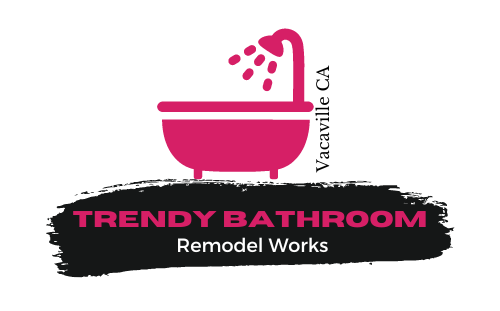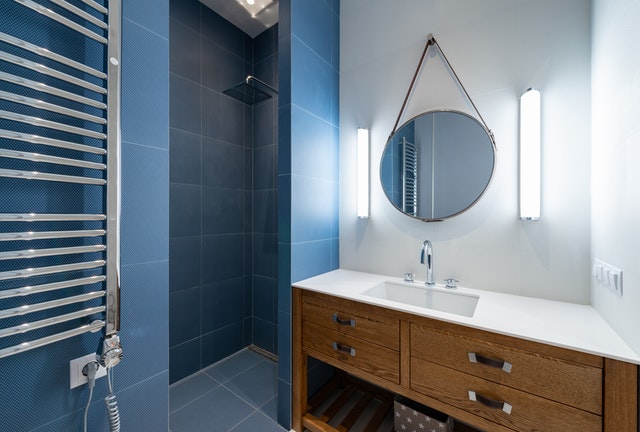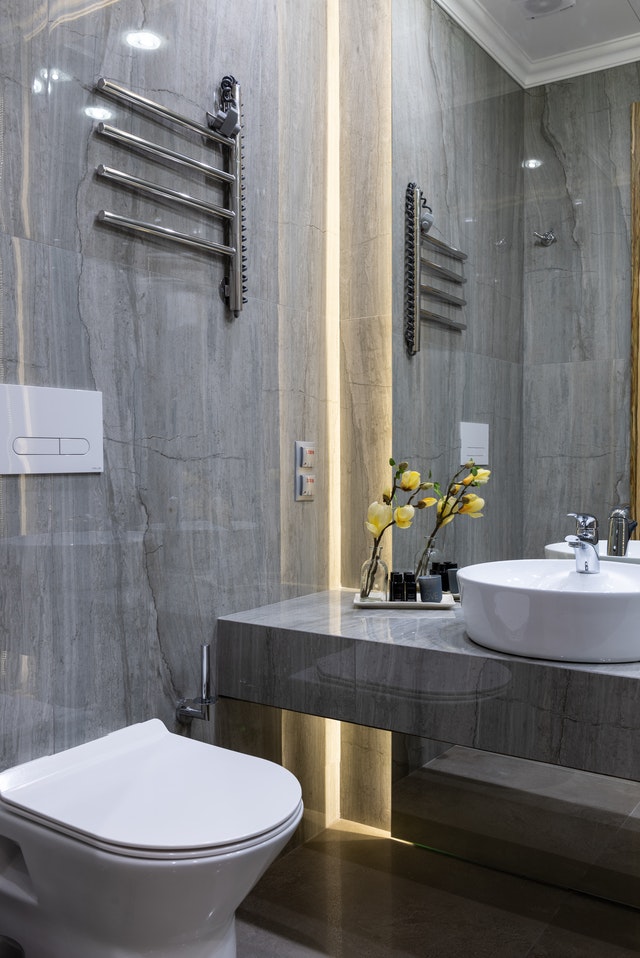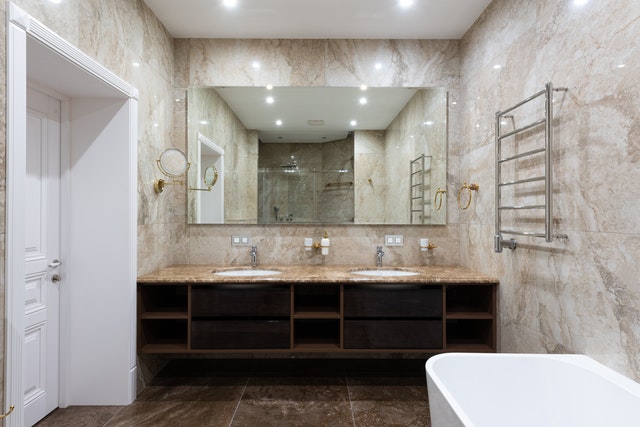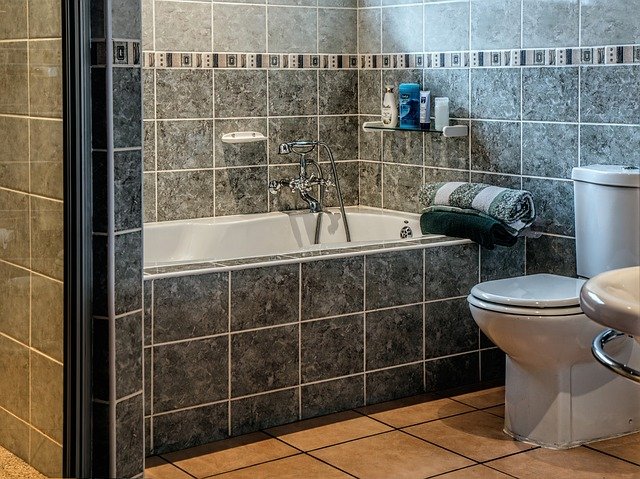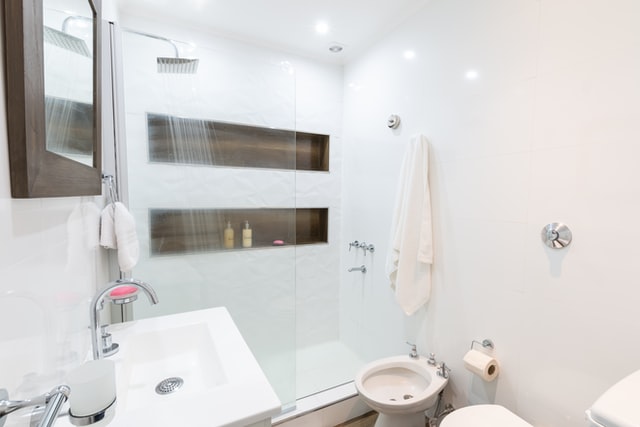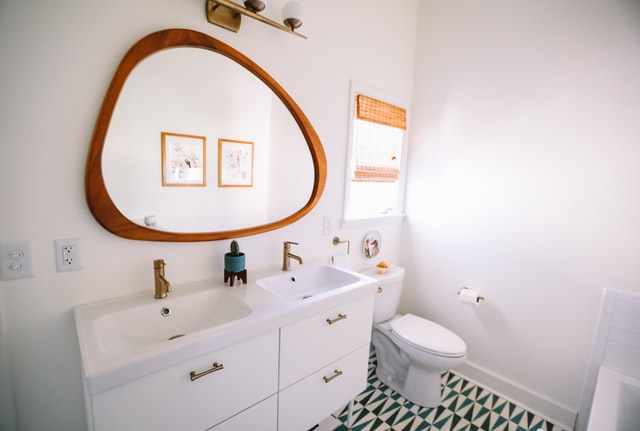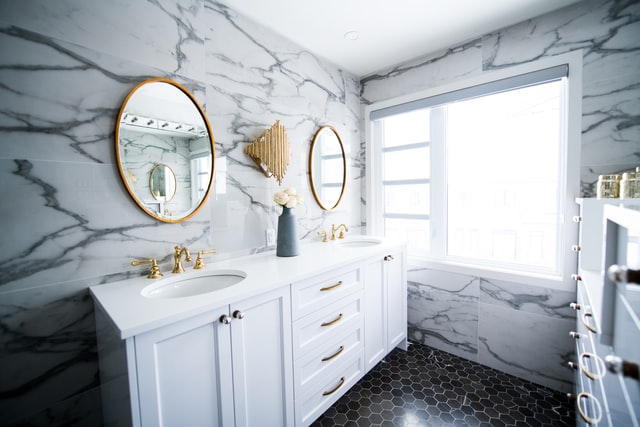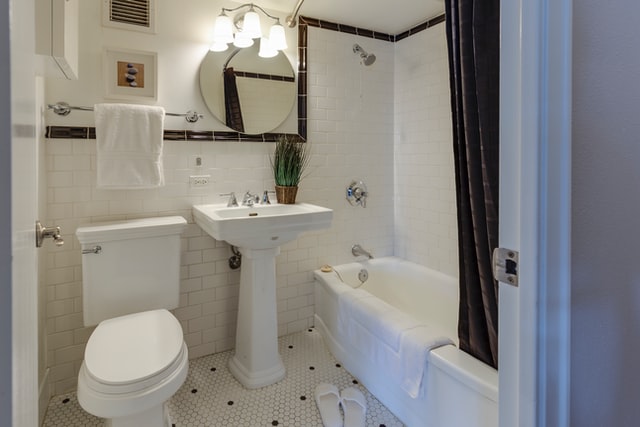Bathroom And Exotic Fixtures
Bathroom And Exotic Fixtures
This is an excerpt from the Book called “A Guide To Design And Renovation“ by Steve Thomas And Philip Langdon. Continue reading to learn more about Bathroom And Exotic Fixtures, thanks to the author.
Materials
Fixtures
There is a mind-boggling array of fixtures, faucets, and gadgets for the bath, so many that it is impossible to cover them all in this book. You can investigate the market in a number of ways. Be on the look-out for eye-catching plumbing fixtures in hotels, restaurants, and residences; peruse magazines for photos, advertisements, and articles; and visit plumbing showrooms, some of which allow you to try out faucets, showers, and even whirlpools and spas. A good resource is the Kitchen and Bath Source Book (MBC Data Distribution Publications, USA, Indianapolis, IN 46268), a phone book-size tome showing pictures and descriptions of just about every piece of kitchen and bath hardware out there. The book lists no pieces, but it is updated annually and will give you a good sense of what is available and who manufactures it.
Toilets
You would think that selection a toilet would be the simplest of all the choices you have to make when specifying a bathroom. Wrong, scores of different models are out there; American Standard alone offers more than a dozen styles. And if the various size, shapes, colors, and styles are confusing, at least the names are amusing, if not downright mystifying. Manufacturers produce toilet in individual models ranging from your regular garden variety (some model names: “Plebe, New Cadet”) to toney, high-priced models drawn by famous architect and furniture designers. Most manufacturers offer collections, or “suites,” of similarly styled lavatories, pedestal sinks, bathtubs, toilets, and bidets. Much of the design is excellent, with styles ranging from postmodern and minimalist, to art deco, Victorian, industrial, and what you might call 1940s apartment. Because the fixtures are offered in collections, you are able to unify your bathroom’s design.
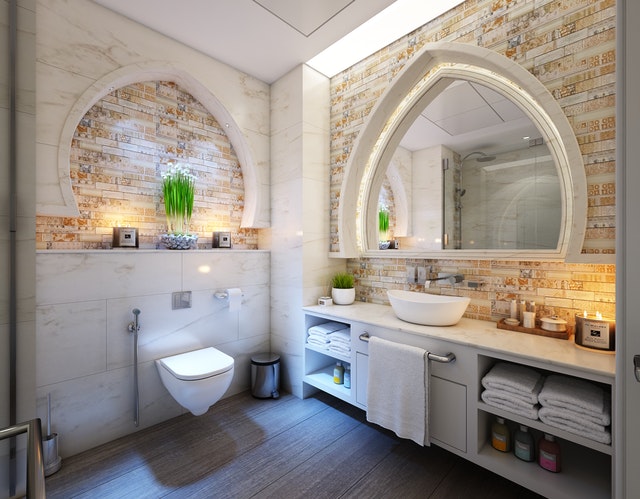
In general, high style is synonymous with high price, but some functional differences do exist between styles. The first is Size: toilets come in varying widths, heights, and bowl shapes, some of which you might find more comfortable than others. Chances are, you’ve probably never tried a toilet on for size, but since in considering your renovation you are preparing to pay a good sum to make the room suit your tastes, you might as well get a toilet to suit your behind. The best way to choose is, well, to sit on more than one of them and see which one seems right.
Other functional differences; one-piece models are generally easier to clean; low-profile models may offer more wall space or potential for storage, such as when built into a wall unit or an extension of a vanity; many of the higher- priced toilets are quieter flushing, which may be an advantage in a master bath if you or your partner is a light sleeper. Customarily, the flush handles on toilets are on the right as you sit on the fixture. Some of the high-style toilets, though, place the handle on the left. If there is a mixture of toilets in your house, you may find yourself groping around for a handle that is not there. This may be a minor point, but in my own house all handles are on the right of the toilet except on the one in the master bath. It is incredibly annoying to have to think which room you are in just to flush the toilet.
In general, all the toilets manufactured by the major plumbing fixture manufacturers are well engineered and of excellent quality-you pay more for style, not for quality. Since the standard toilets are competitively priced, it makes no sense to try to economize by buying anything less than a high-quality toilet. If in doubt about which brand to buy, ask your plumber. He would know, through experience, the price-quality ratio of the various brands.
In Massachusetts and some other jurisdictions, all new toilets must be low-volume models, which flush with as little as 1 ½ gallons of water. While the notion of conserving water is something with which we wholeheartedly agree, some of the current generation of low-volume toilets do not always expel the waste in one flush. Repeated flushing may be necessary, which results in using as much or more water than a standard toilet. Unless you live in a jurisdiction that requires the installation of a low-volume toilet, you may want to stick with the standard models, most of which, in any case, use only 3 ½ gallons of water per flush. The problems with low-volume toilets will undoubtedly be solved, so it’s worth asking your plumber if he knows of models that function well.
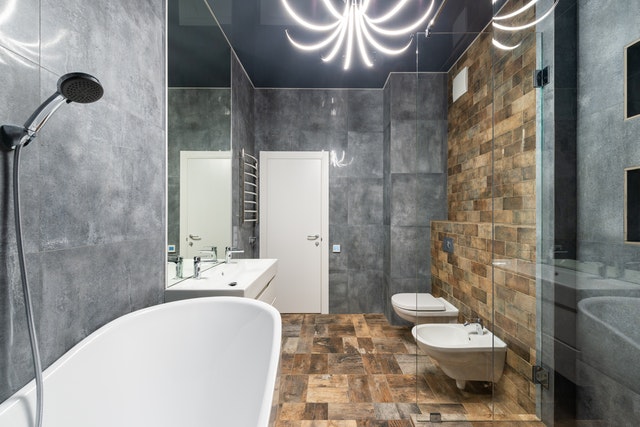
Bidets
The bidet, long a common fixture in Europe, has become de rigueur in the well-heeled American bathroom in the last ten years. I have to confess that before I went to Europe as a college student, I had never seen one and the only description of their use I had read were in the novels of Henry Miller. Simply, put the bidet is used to wash ones private regions; in Europe note men and women use them. Ellen Cheever of the National kitchen and Bath Association, claims that regular users of the bidet consider it far superior to using only toilet paper. My wife says a bidet is great because a woman can cleanse herself without having to fully undress and bathe. It is also, she adds an excellent place to wash lingerie or soak pots of orchids.
The bidet should be installed near the toilet so a person can use it to wash up. One straddles the device, facing the controls, which are usually placed on the wall or on the fixture back ledge. Both hot and cold water must be available, and the controls should be easy to reach while seated. For effective cleansing the bidet contains spray nozzle.
Ms. Cheever says the bowl of the fixture should be long enough (an interior dimension of 20 inches is recommended) that one can reach both the front and back of one’s body without shifting. Storage for town soaps and accessories should be within reach when settled and there should be a robe hook close by for clothing that’s been removed.
If you plan to install bidet, locate it conveniently and not, as we see in some speculative condo projects wedged into a space that makes it inaccessible or unpleasant to use. Since the bidet requires a space at least 3 feet wide, this fixture must be carefully factored into the floor plan. As in all choices of fixtures and design, examine your personal habits and ask yourself if you really will use a bidet-a lot of bidets (or so it’s said) have been converted to planters.
Lavatories
Sinks, like all bathroom fixtures, come in a tremendous variety of styles and materials. Probably the most common material is vitreous china, which has earned a reputation for durability, resistance to damage, easy cleaning, and reasonable cost. In the past few years, we’ve seen a small but growing use of painted china lavatories, which have a delicate, ornamental quality. Whether the painted decoration will stand up to daily use is something that would concern use.
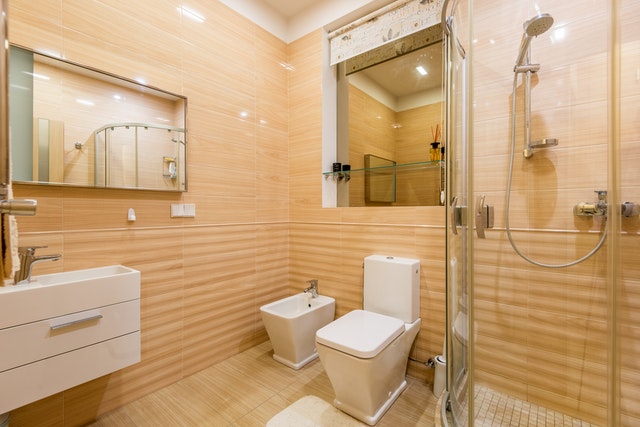
Another common material is acid-resistant enameled cast iron- the same material as in cost-iron tubs. These sinks are smooth durable good-looking came in a variety of colors and are competitively priced. Also available are sinks of “cultured marble,” an amalgam of polyester resin, pulverized marble and other sub stances. This is a problematic material in part because it’s hard for a consumer to judge the quality just by feeling or inspecting the product. “Cultured marble” is soft and its protective layer is thin. If it wears through or is damaged by a burning cigarette, you’re stuck with an undesirable appearance.
Lavatories are also variable in real marble (expensive) stainless steel, and solid surfacing. Of particular interest is a solid surfacing countertop with integral lavatories, which some manufacturers offer. Integrating the lav with the counter eliminates the rim seal around the sink, which makes wiping the counter easier and gives a much cleaner appearance. Du Pont, manufactures of Corian and some other manufactures offer solid surfacing lavs that can be bonded to a counter of matching- or contrasting colored solid surfacing, opening up another range of design possibilities yet another option, and one I would explore in my next master bath rehab, is using a pair of small stainless steel kitchen sinks mounted under a counter of solid surfacing or stone.
Exotic Fixtures
In the course of our Concord barn project, we took a field trip out to western Massachusetts to visit General Electric’s Plastic House, a “concept house” built to explore the various ways in which plastics might be used in the house of the future. In the bathroom were fixtures of the “future,” some of which are available today. In the shower compartment was a microprocessor-controlled set of sprayers that traveled up and down on tracks, soaking the bather with various jets of water. One then stepped out of the shower in front of a full-height body dryer, which evaporated the water on the skin with blasts of warm air. Both of these items are of Japanese manufacture and are commercially available.
Riding atop the toilet was an “intelligent toilet seat” manufactured by the Japanese firm Toto. What makes it intelligent? Well, you start by doing what you sat down on the toilet to do. Then, in-stead of reaching for toilet paper, you press a button on the controls attached to the side of the toilet. In response, a plastic water nozzle extends from beneath the seat and directs a jet of cleansing warm water toward your privates. The washing complete, the intelligent toilet doesn’t send you away wet; it emits a stream of warm air to dry you. Depending on the particular model, you may even be able to preselect the temperature of both air and water. The seat itself may be heated, and a built-in memory stores your favorite settings so you don’t have to reselect them every time you use it! The intelligent bottom washer is now being imported to the United States. Last time we checked with a Boston-area retailer, the item carried the price tag of a mere $900. So, if you’re looking for that unusual gift for your next wedding anniversary…
If you don’t think that will make a hit, you might try an “environmental chamber” such as Kohler’s Masterbath Habitat. This compartment simulates nature. You can recline under sunlamps in the imagined tropics or be soothed by the gentle mists of the rainforest. You might follow this with steam. There’s a sauna cycle, too, surrounding you with dry, desertlike heat. Price? Well, if you have to ask, perhaps you should take a second look at the intelligent bottom washer.
